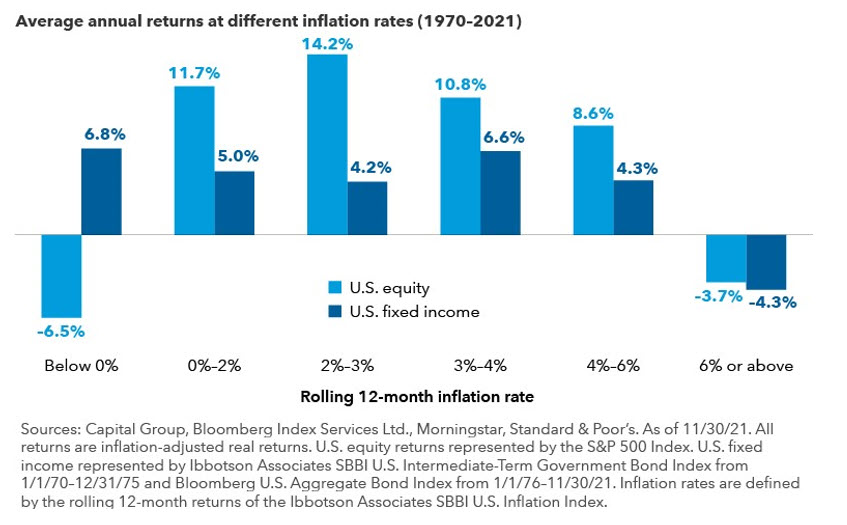Winter Quarterly Commentary 2022
Dear Clients and Friends,
We hope everyone is staying safe and healthy. 2022 has started with a market correction & volatility. While the S&P 500 was up over 27% in 2021, it has experienced an -8.73% decline through January 27 th . The S&P 500 is on pace for its worst start since 2016. We attribute the increased market volatility to the Federal Reserve announcing tighter monetary policy, higher inflation, omicron covid variant, global macro issues, and historical tendencies within markets (the current time without experiencing a 10% correction was 2x the historic average).
The S&P is now down -8.73%, the Dow Jones Industrials down -5.97%, International stocks MSCI EAFA down -4.35%, and the Barclays Bond Aggregate down -1.26% (thru January 27th 2021).
Energy, Financials, and Utilities are outperforming, while Technology, Communication Services, and Consumer Discretion are underperforming early in 2022.
Market Outlook
From Last Quarter:
The S&P 500 continues to perform as record highs have been reached several times this month. While the Delta Variant and higher inflation have caused recent volatility, we still see positive signs for the overall market. Positive technical trends and robust earnings growth reflect a growing economy. In this environment, we continue to remain constructive long term even if short term volatility might arrive for the fall season.
From This Quarter:
We believe that increased volatility will continue throughout 2022. Pullbacks of 5% or greater are normal in the markets and historically average one per quarter. We emphasize clients maintain exposure to high quality stocks with a focus on strong earnings, strong balance sheets, and a dividend growth focus. While always difficult to determine market bottoms, we view this recent pullback as a buying opportunity.
U.S Economy Is Healthy, But Inflation Persist
American economy should remain healthy in 2022 thanks to strong corporate profits and consumer spending, but inflation pressue and other headwinds might temper growth.
The chart below reflects historical returns based on different inflation rates.

The Team
Legacy Financial Group’s Christmas Party was in Richmond, VA. We all had great time at our annual holiday gathering!

Did You Know Trivia
Midterm elections occur at midpoint of four-year presidential term and usually result in president’s party losing ground in congress. Over the past 22 midterm elections, the president’s party has lost an average of 28 House of Representative seats and 4 Senate. Only twice has presidents party gained seats. Normally this information is already priced into markets, but extent of shift can cause uncertainty. The chart below reflects muted market returns early and stronger returns later in midterm years.

We have listed a link to the most recent quarterly market data for your review. Raymond James’ Capital Markets Review reflects current market and economic conditions. You can access the report by clicking on the link http://www.raymondjames.com/pdfs/capital_markets_review.pdf.
Thank you for your interest and as always please do not hesitate to contact us if you have any questions or comments.
The S&P 500 is an unmanaged index of 500 widely held stocks that is generally considered representative of the U.S. stock market. The Dow Jones Industrial Average (DJIA), commonly known as “The Dow” is an index representing 30 stock of companies maintained and reviewed by the editors of the Wall Street Journal. The MSCI is an index of stocks compiled by Morgan Stanley Capital International. The index consists of more than 1,000 companies in 22 developed markets. The Bloomberg Barclays US Aggregate Bond Index is a broad-based flagship benchmark that measures the investment grade, US dollar-denominated, fixed-rate taxable bond market. Sector investments are companies engaged in business related to a specific sector. They are subject to fierce competition and their products and services may be subject to rapid obsolescence. There are additional risks associated with investing in an individual sector, including limited diversification. There is an inverse relationship between interest rate movements and bond prices. Generally, when interest rates rise, bond prices fall and when interest rates fall, bond prices generally rise. Investing involves risk and you may incur a profit or loss regardless of strategy selected. One cannot invest directly in an annex. Past performance is not indicative of future results.

